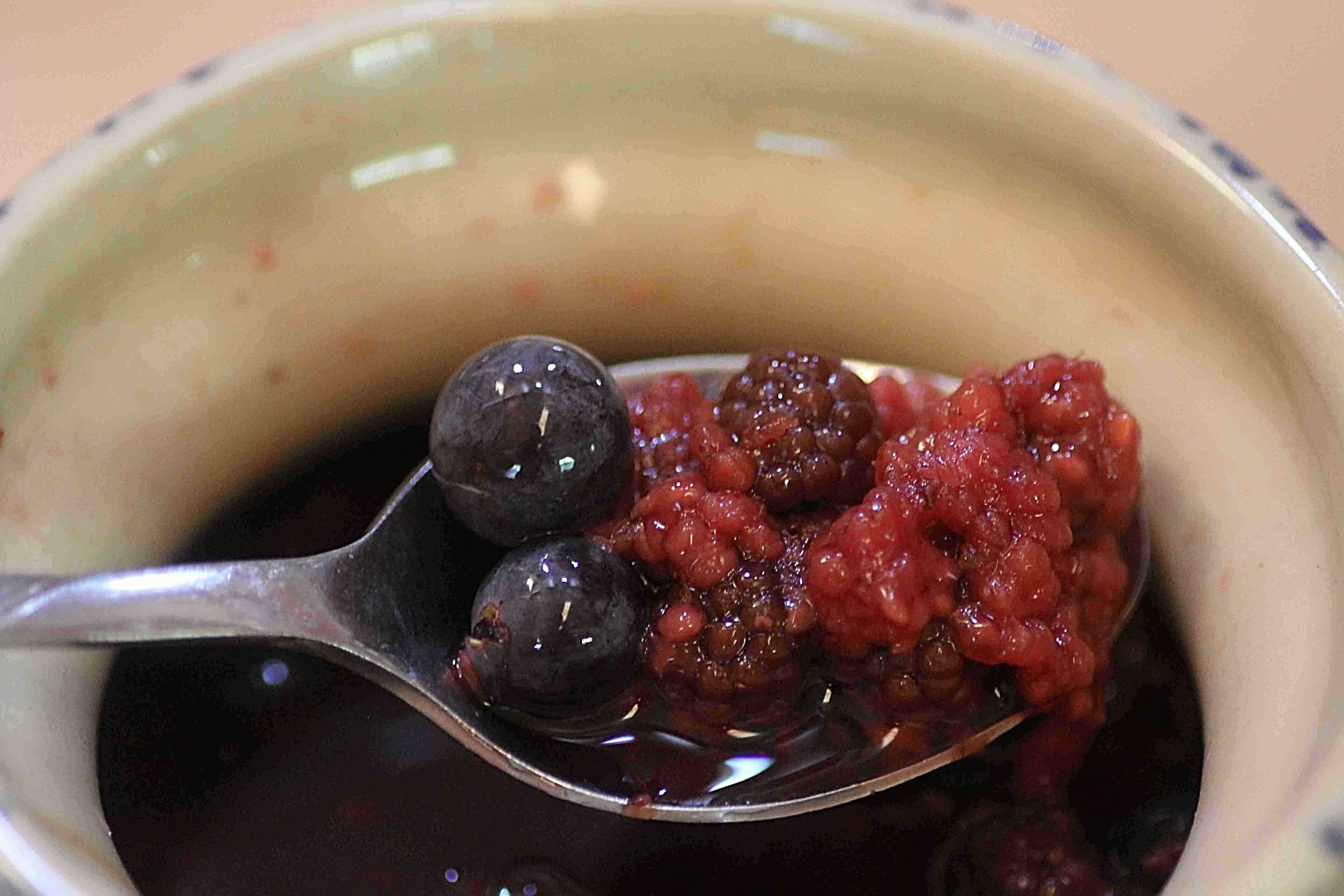
Rumtopf quite literally means rum pot. It is a traditional German method of preserving fruits of summer with sugar and strong rum. It is traditionally eaten around Christmas but if properly stored it keeps indefinitely.
This is the type of recipe that has the potential to become a beloved family tradition. It really is THAT good!
It's not complicated to make
Simply combine various types of fruit, rum and sugar into a stoneware pot (the rum pot) and leave it to macerate. As fruit comes into season, you continue adding fruit and topping it up with rum and sugar until the pot is filled. Once filled you let it mature for at least two months before consuming. We find that it gets even better with age and it's well worth making a big batch.

Serving Suggestions
You can serve small spoonfuls of rumptopf over vanilla ice cream, cakes and other desserts. You can also place a spoonful in the bottom of a champagne glass and top with champagne or white wine. It is also a nice topping on savoury meals such as roast chicken. You can turn a bowl of porridge into something special with a side serving of warm rumtofp.
When you use it, you do not need large amounts, as it has a very potent flavour. Just a spoonful can transform a mundane dessert into something special.

Ingredients
- Assortment of fresh fruit
- Sugar
- Good Quality dark rum (minimum 80 proof)
Directions
The amount of ingredients you need will vary on the size of your pot and how much you want to make. The formula is very simple. The fruit to sugar ratio is 2:1. Then you'll need enough rum to keep the fruit covered. Sugar is important in this recipe. It acts as a preservative and will also impact the final flavours of the fruit. With too little sugar the fruit may taste bland.
As each fruit comes into season, remove the pits and seeds and chop larger fruit such as peaches into bite sized pieces. Measure one parts sugar to 2 parts fruit and toss everything into the pot. Cover the fruit with rum, making sure all fruit is submerged and that the rum is covering the fruit by at least 1". Keep repeating over the summer and autumn until your pot is filled. Once the last of the fruity has been added cover the pot with plastic wrap and a lid. Place it in a cool/dark location for two months. You want a cool location so it does not start to ferment too quickly.
NOTE: Check periodically to make sure there is no extra fermentation taking place. If you see bubbles beginning to develop, this is fermentation. If this happens you will need to add a stronger rum. The plastic cover will help prevent fruit flies and evaporation. I use it in addition to the fermenting crock lid.
Good fruits for this recipe include the following. Avoid mushy fruit such as bananas and select fruit that is fresh and un-blemished.
- Strawberries
- Cherries (pitted)
- Peaches
- Plums
- Grapes
- Nectarines
- Raspberries
- Blackberries
- Red currants
- Gooseberries
- Apples
- Pears
- Pineapple
You can also add a small amount of spices
- Cinnamon sticks
- Star anise
- Whole Nutmeg
Important:
The rum preserves the fruit as it ages, but if any pieces are floating above the liquid they will be exposed to oxygen, and could form mould. Make sure that all of the fruit is submerged and there is at least one inch of rum covering all of the fruit. If you get mould your rumptopf is ruined and should be thrown out.
The Rum Pot

If you have a fermenting crock with weights then you have a perfect container. You can however use any container that you have. Just be sure to keep it in a dark location. You can find vintage pots on-line and in antique stores so keep your eyes peeled. I really like the German fermenting crocks that have handles on the side. They can be used to make your rumtopf but also things like sauerkraut and apple cider vinegar. Here's a link to a nice versatile fermenting crock (affiliate link).
For more stories like this one follow me at: @walkerland
If you liked this you might also enjoy
Eat Your Sunflowers - The many surprising culinary uses for sunflowers (including coffee).
The Homestead Kitchen - A little tour of our off grid kitchen.
@walkerland is part of the Amazon affiliate program. If you choose to buy anything from the Amazon links provided we may get a small commission at no cost to you.

